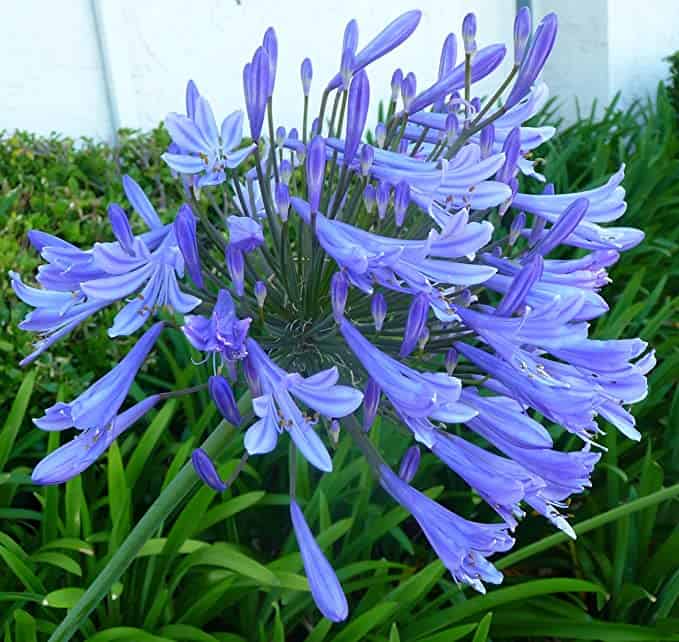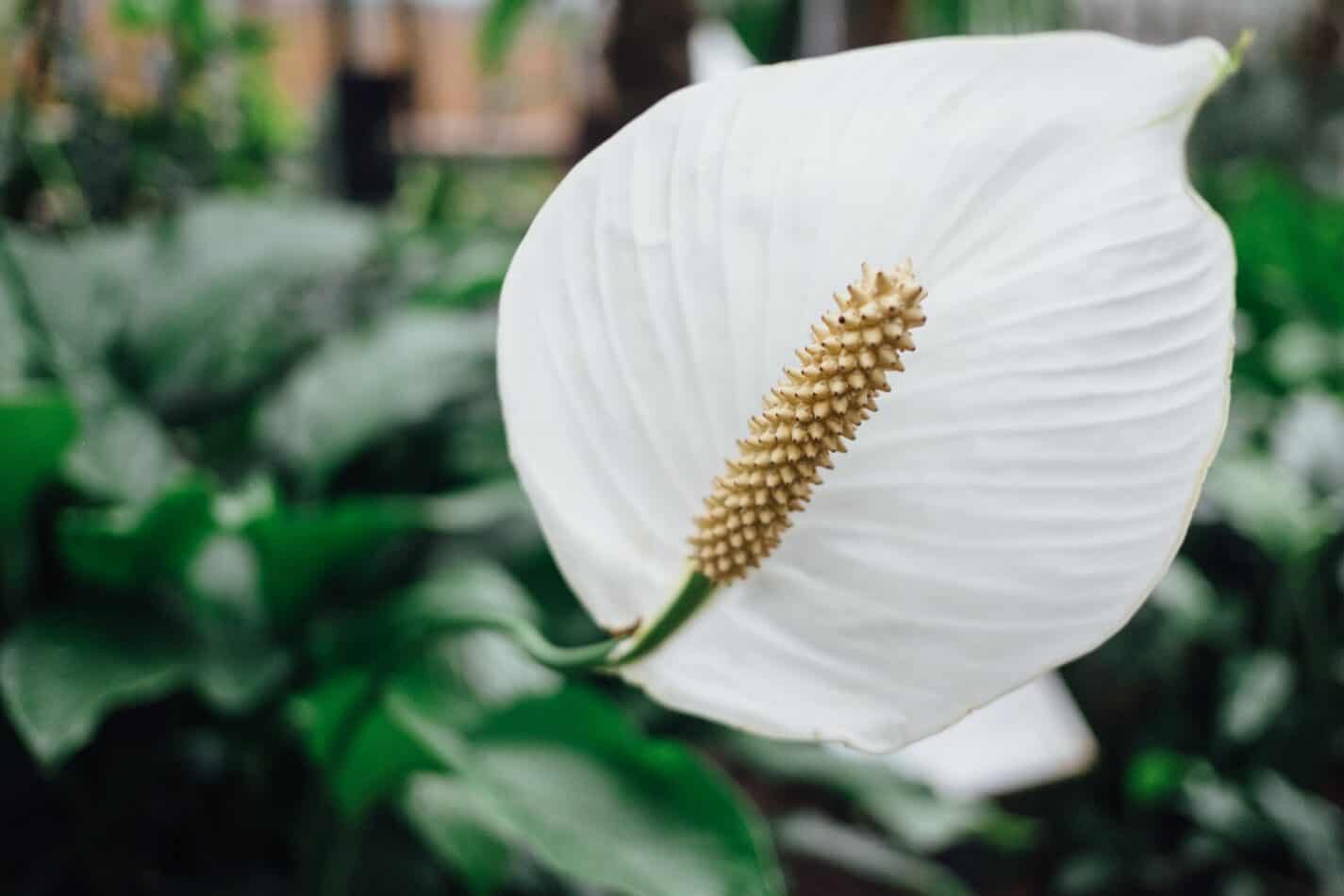The African Lily, also known as the Agapanthus Africanus, is a showy perennial that adds glimmer to both coastal gardens and indoor pots. Hailing from the Mediterranean and South Africa, this evergreen bulb can grow up to one meter and produces an erect stem that carries a globe-shaped display of bright and vibrant blue, lilac, or white flowers. Each globe is made up of several trumpet-shaped blooms that have been known to endure even the saltiest sea winds, making them perfect for borders, rockeries, and outdoor window containers. The name Agapanthus is derived from Greek, where ‘agape’ means love, and ‘anthos’ means flower; thus, symbolizing the perfect love.
How To Plant
African Lily is a low-maintenance flower that’s easy to grow and its blooms last for more than two months. It requires at least four hours of direct sunlight each day and does best in soil that drains well. African Lily grows well in any type of soil but prefers fertile and well-draining soil. Optimal temperature for these plants is around 60-65F (15-18C) during the day and just slightly lower at night. They need regular watering during their active growing season and can tolerate humidity but also need plenty of airflow. To feed the plants, use a well-balanced fertilizer about once a month.
Buy African Lily on Amazon>>
Meaning and Symbolism
The African Lily has many different meanings depending on culture. It is believed to represent purity and peace in some cultures, while in others it symbolizes prosperity and good luck. In various religions, it symbolizes chastity and humility, while in some African cultures it is thought to be a symbol of hope and unity. In its etymology, African Lily expresses “perfect love”, providing understanding that its beauty and quirkiness should be shared and enjoyed with limitless appreciation.
History, Mythology, and Religious Significance
The African Lily has been connected to religious ceremonies throughout history. In North Africa, it is believed to represent purity and ascension; it is often used in Moorish ceremonies to symbolize ascension from earthly norms to spiritualistic enlightenment. In India, it is related to funerary ceremonies where family members and friends of the deceased offer the flower for comfort and protection. In Buddha legends and teachings, different colored Agapanthus represent insight, admiration and understanding.
Flower Varieties and their Defining Characteristics
The African Lily comes in four distinct varieties, including the evergreen African Blue, the cobalt blue Flowers of Egypt, the dwarf ‘Powerpuff’ with petite flowerheads, and the Mauna Loa Deep Blue varieties. Of these four varieties, African Blue is the most popular selection by far. It features strong, erect stems that hold tightly-clustered globes of bright, blue flowers. Flowers of Egypt varieties tend to feature slightly darker, cobalt blue blooms, while the Mauna Loa and PowerPuff varieties feature deep, velvety blues.
How To Pot and Repot
African Lily should be planted in a container large enough to hold their growing roots and soil. They can be planted in an indoor ceramic pot or an upright pot filled with soil. Before planting, the soil should be enriched with compost and well-drained. Place the bulb in the pot, with the top half poking above the soil and the roots below. Then pour the substrate around the bulb and press down lightly. Water regularly and fertilize with a slow-release fertilizer every few weeks. When the flower is dormant, the plant can be safely repotted. Carefully remove the rootball with the soil, trim away any broken roots, and repot the flower into a new pot.
How to Prune
African Lily requires little pruning, but to encourage dense blooming and to increase the longevity of the flowers, it’s important to prune them regularly. Pinch off any dead or dying blooms and use clean pruning shears to trim the foliage around the base of the flower. Pruning these plants will encourage healthy, vigorous growth and more flowers. When the flowers’ petals start to fade and curl, it’s a sign that they should be deadheaded.
How To Propagate
Propagating African Lily is a relatively easy process that involves several steps. Start by taking stem cuttings in the late winter/early spring. Make sure to choose a stem that has at least three leaves and three flower buds. Cut it at an angle just below one of the leaves. Take the cutting and place it in a cup of lukewarm water and wait until you see small root nubs forming. Then move your cutting to a pot filled with moist soil and pea gravel. Place the pot near a bright window and water it about two to three times a week. After a few weeks, you should be able to transplant the cutting.
Common Pests and Diseases
African Lily is generally hardy and resistant to most pests and diseases, but there are some potential issues to be aware of. The most common pests that can affect these plants are caterpillars and slugs. Caterpillars can be removed by hand and slugs can be prevented with a slug bait. As for diseases, African Lily can sometimes be affected by root rot, wilt, and fungal disease. Black spots, yellowing of foliage, or wilting may be signs of an underlying disease. To prevent root rot, make sure the pots have plenty of drainage holes. Fungal diseases can be treated with fungicides or other remedies according to the type of disease.
Three Frequently Asked Questions:
- What is the best time to plant Agapanthus africanus? The best time of year to plant African Lily is late spring or early summer when the temperature and weather conditions are ideal for the plant.
- Does the African Lily attract butterflies? Yes, African Lily is an excellent choice for attracting butterflies to your garden. The brightly-colored flowers are irresistible to these delicate creatures.
- Does the African Lily require pruning? Yes, African Lily does require pruning but only to encourage dense blooming and to improve the overall health of the plant.
Fact Sheet
| Fact Sheet | Data |
|---|---|
| African Lily | Agapanthus africanus |
| Family | Liliaceae |
| Plant Type | Perennial |
| Mature Size | Up to one meter in height |
| Sun Exposure | At least four hours of direct sunlight |
| Soil Type | Prefers fertile, well-draining soil |
| Soil pH | 6.2-7.2 |
| Bloom Time | Summer (June to August) |
| Flower Color | Blue, lilac, or white |
| Hardiness Zones | 4-11 |
| Native Area | Mediterranean and South Africa |
What we love from Amazon this week
Buy these wonderful flowers directly from Amazon:
















